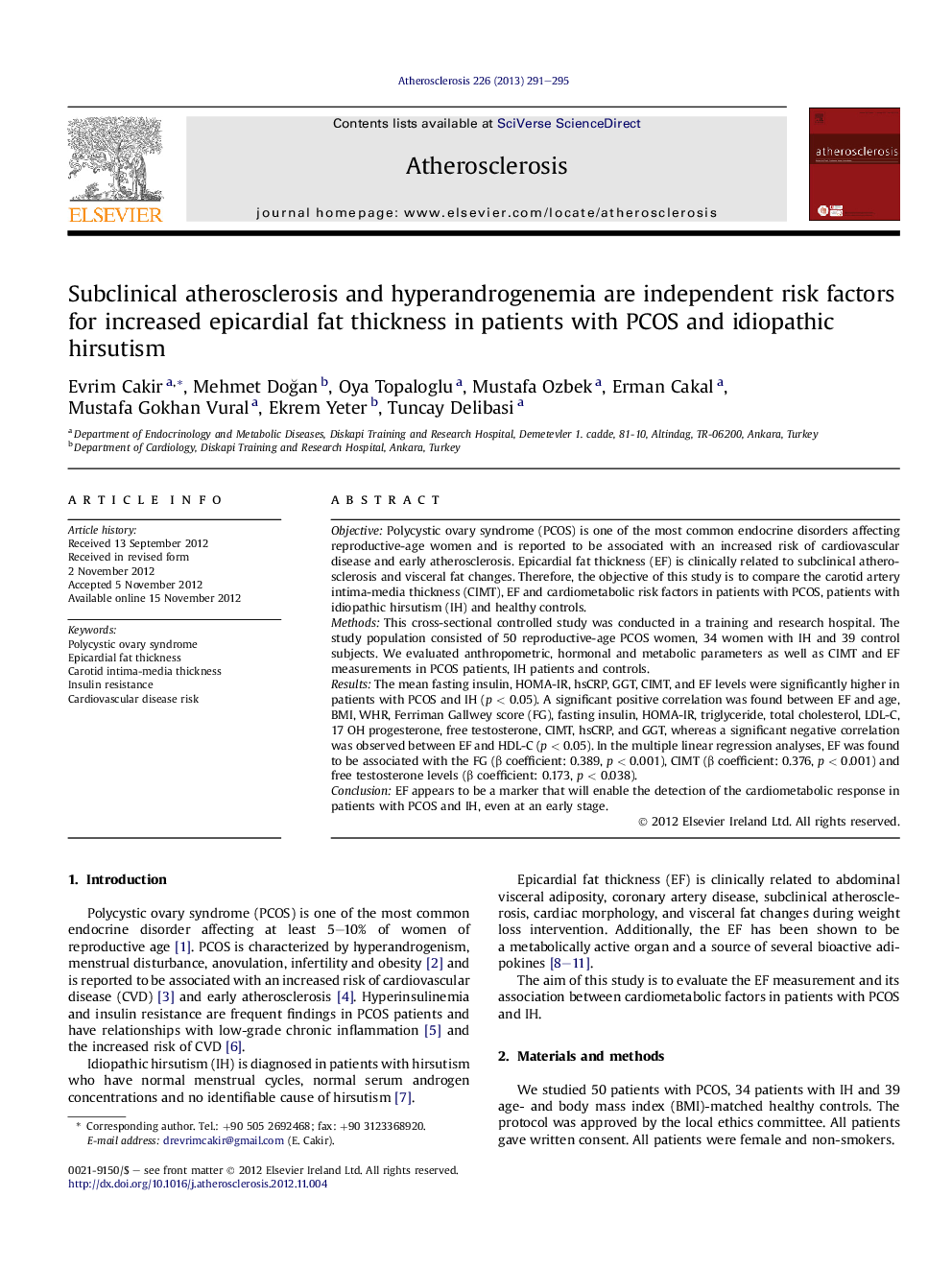| کد مقاله | کد نشریه | سال انتشار | مقاله انگلیسی | نسخه تمام متن |
|---|---|---|---|---|
| 5948035 | 1172375 | 2013 | 5 صفحه PDF | دانلود رایگان |

ObjectivePolycystic ovary syndrome (PCOS) is one of the most common endocrine disorders affecting reproductive-age women and is reported to be associated with an increased risk of cardiovascular disease and early atherosclerosis. Epicardial fat thickness (EF) is clinically related to subclinical atherosclerosis and visceral fat changes. Therefore, the objective of this study is to compare the carotid artery intima-media thickness (CIMT), EF and cardiometabolic risk factors in patients with PCOS, patients with idiopathic hirsutism (IH) and healthy controls.MethodsThis cross-sectional controlled study was conducted in a training and research hospital. The study population consisted of 50 reproductive-age PCOS women, 34 women with IH and 39 control subjects. We evaluated anthropometric, hormonal and metabolic parameters as well as CIMT and EF measurements in PCOS patients, IH patients and controls.ResultsThe mean fasting insulin, HOMA-IR, hsCRP, GGT, CIMT, and EF levels were significantly higher in patients with PCOS and IH (p < 0.05). A significant positive correlation was found between EF and age, BMI, WHR, Ferriman Gallwey score (FG), fasting insulin, HOMA-IR, triglyceride, total cholesterol, LDL-C, 17 OH progesterone, free testosterone, CIMT, hsCRP, and GGT, whereas a significant negative correlation was observed between EF and HDL-C (p < 0.05). In the multiple linear regression analyses, EF was found to be associated with the FG (β coefficient: 0.389, p < 0.001), CIMT (β coefficient: 0.376, p < 0.001) and free testosterone levels (β coefficient: 0.173, p < 0.038).ConclusionEF appears to be a marker that will enable the detection of the cardiometabolic response in patients with PCOS and IH, even at an early stage.
⺠The EF measurement is a non-invasive tool to determine the CVD risk in potential diseases. ⺠A higher EF measurement has been found to be associated with inflammation and CVD risk. ⺠Clinical and biochemical hyperandrogenemia showed an independent association with the EF.
Journal: Atherosclerosis - Volume 226, Issue 1, January 2013, Pages 291-295